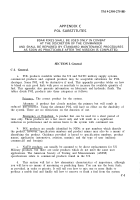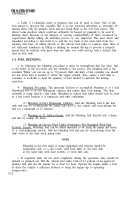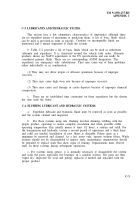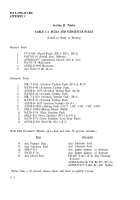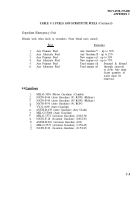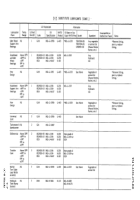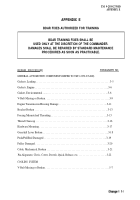TM-9-2350-275-BD - Page 204 of 223
TM 9-2350-275-BD
APPENDIX C
e. Table C-1 identifies fuels or products that can be used as fuels. One of the
best means to increase the available fuel is to use potential substitutes as extenders by
mixing them with the primary fuels and not using them as the sole fuel source. This
allows some products which could not ordinarily be burned (or pumped) to be used by
diluting them. Because of the dangers of varying combustibility of fuels, increased by
vaporization during filling, the blending process is very important. The most direct and
expedient procedure to mix fuels is to add the two fuels at the same time from two
separate fuel lines. If added directly to the vehicle fuel tanks as separate fuels there is
not sufficient turbulence in filling or shaking by normal driving to provide a properly
mixed fuel. In vehicles with more than one tank, you could end up with a distinct fuel
type in each tank.
C-2. FUEL BLENDING.
a. In following the blending procedure it must be remembered that the basic fuel
is the better of the two fuels and the extender is the poorer. The blending fuel is the
extender. While you can use up to 50 percent (half and half) of the extender you should
not use more than is needed to obtain the supply needed. Also, ensure a fuel tank or
container is available to hold the quantity of fuel needed to perform the mixing
operation.
b.
Blending Procedure. The preferred location to accomplish blending is at a fuel
dispensing site or in fuel dispensing vehicles that utilize their own pumps. The least
desirable is using vehicle’s fuel tanks. Blending in vehicle fuel tanks should only be done
as a last resort because it is imprecise and time consuming.
(1) Blending in Fuel Dispensing Vehicles. Add the blending fuel to the fuel
tank and mix by reconnecting the pump inlet hose to the vehicle and recirculating the
fuel for a minimum of 15 minutes.
(2) Blending in 55 Gallon Drums. Add the blending fuel directly into a drum
and mix by rolling the drum.
(3) Blending in Gravity Feed Tanks (Stationary) Not Equipped With Fuel
Transfer Pumps. Blending fuel can
of a fuel
be added manually or by using the pump and meter
dispensing vehicle. Add the blending fuel and mix by recirculating from the
tank outlet to the tank truck pump inlet.
NOTE
Blending in the fuel tanks of using equipment and vehicles should be
undertaken only as a last resort. Add both fuels to the fuel tank
at the same time with dual nozzles, or from fuel cans.
c. If expedient fuels are not used completely during the operation, they should be
drained or pumped out. Fill the vehicle fuel tanks with 10-15 gallons of an approved
primary fuel and run the engine for at least 1/2 hour. Operate the engine under a load
or drive the vehicle a sufficient distance to bring the engine up to operating
temperature.
C-2
Back to Top










